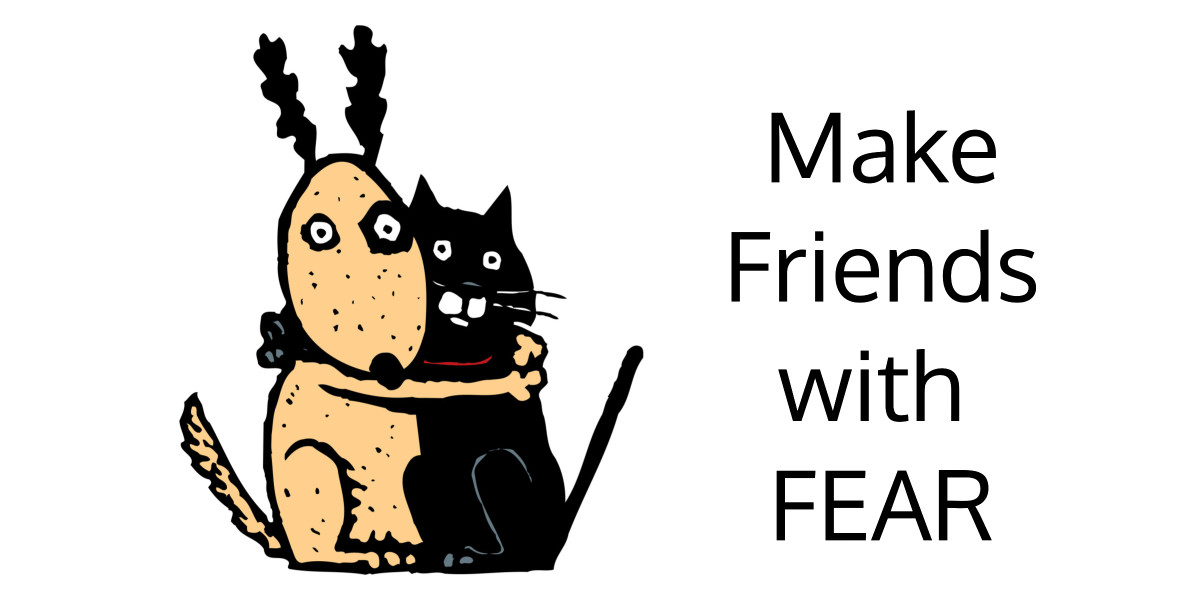
Halloween — a month-long celebration of spooks. The kids on my street decorate early, with skeletons lazing in front yards, spiders poking out from curbside gardens, dangerous looking pumpkins standing guard on front porches. Neighboring streets have spooky graveyards, inflated black cats, sound machines, you name it. All in fun…and of course the prospect of trick-or-treating always helps to soothe fearful feelings.
Why then, can it feel so hard to celebrate the fears that arise daily? The fears that stop us in our tracks. The fears that keep us small?
How do we actually make friends with fear? The answers, fortunately, are numerous: Feel it. Sit with it. Understand it. Stay with it. Heal it.
Here are some steps to help fear feel more friendly:
Understand it. The more you sit with your fear, the more you’ll be able to see underneath it. Often our fears stem from a younger place within us. A time when we were scared, perhaps with no one to help us. The longer you observe your fear, the more information you will receive to help it heal.
Bring compassion. Compassion for your fear is crucial. Rather than making your fear ‘wrong’, approach it with a sense of compassion. Imagine a child who feels afraid. How would you respond to this child? With a hug? Reassurance? Love?
Ask yourself what you need in this moment to feel more courageous. Do you need some friendly encouragement? Assistance or guidance of some sort? Do you need more information? When you know what you need, take action to give yourself what you need.
Recognize fear as a friend who wants to keep you safe. Fear is a natural aspect of your biological fight/flight/freeze response. Although your fear might feel inappropriate for the scope of your circumstances, it is triggered by the part of the brain tasked with keeping you safe. Often, this response has been conditioned by previous experiences. Accepting this will make it easier for you to add space between you and your fear, recognizing that it stems from a conditioned, habitual response, not an actual danger.
Relate to your fear in the moment. Most times our fears are related to past experiences, or future worries. Getting clear with fear in the moment will help you become more centered. Rather than being consumed by a scary mind-story — get present and real with your fear. With practice, you’ll begin to see fear as a feeling, and nothing more. Remember: If the fear is true fear, warning you of true danger, you’ll respond most effectively grounded in the present moment.
Meditate. Consistent, daily meditation helps your brain become more effective during times of stress. It helps facilitate easier access to the relaxation response. It helps you disentangle from the emotions that seem to control you. If you’re new to meditation, start with short periods of time. Even 5 minutes. Gradually build your endurance so that you can sit for longer and longer amounts of time. Remember, it’s okay that you don’t feel ‘bliss’ right away. Sitting with your fear, will help it begin to dissipate. It’s this patience observance of your feelings that helps them transform.
Use EFT Tapping. EFT Tapping helps neutralize fear, and other painful emotions. EFT has been clinically proven to reduce cortisol, the major stress hormone, which is elevated during times of fear. By reducing cortisol, you turn on the relaxation response, allowing your nervous system to relax. For a video on how to use EFT tapping, click here.
The bottom line: Making friends with your fear might just be one of the greatest gifts you’ll ever give yourself!
In Courage,
Marian
Need help with fear and anxiety? Contact me.
Leave a Reply